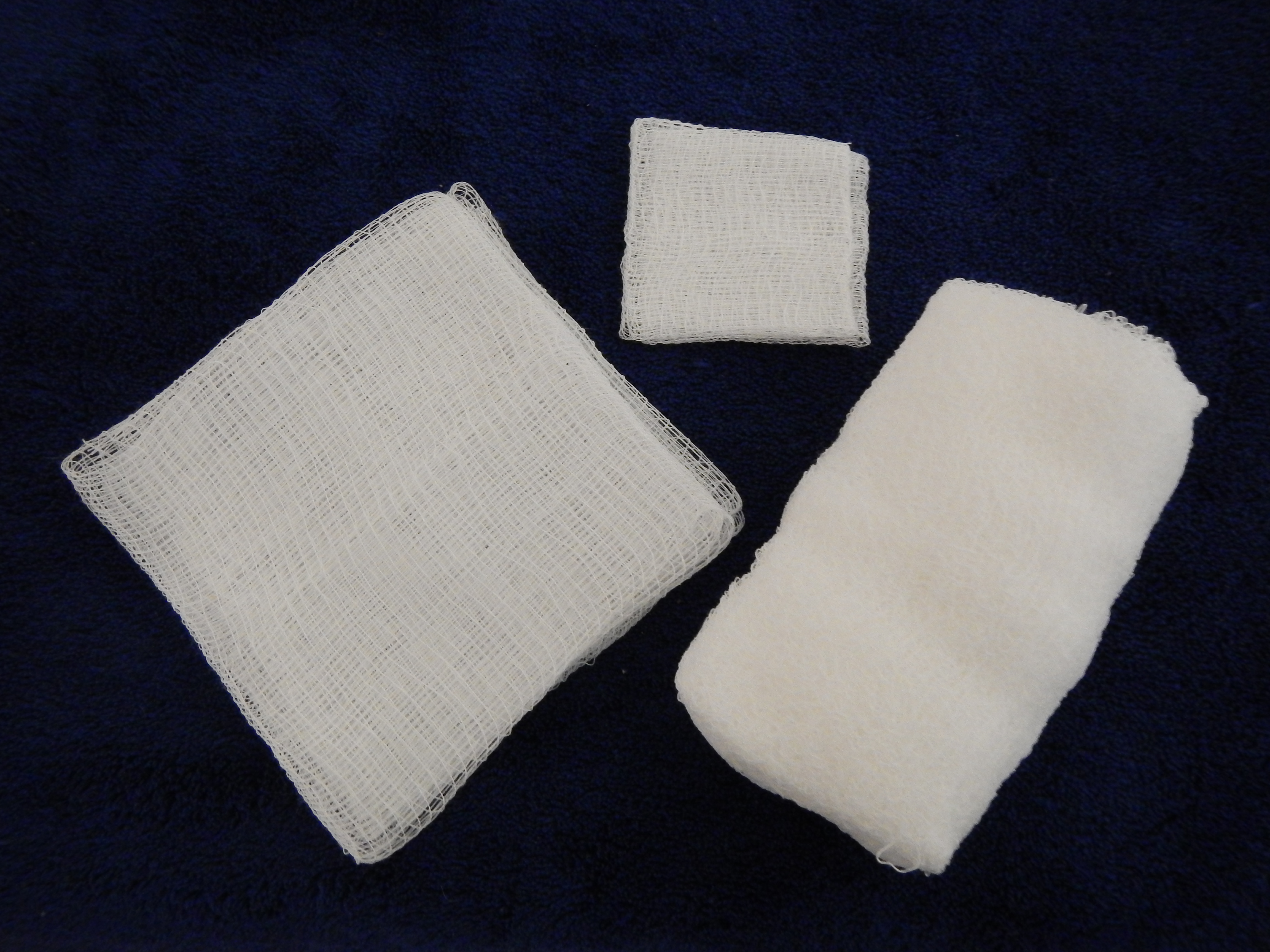Gauze Sponge on:
[Wikipedia]
[Google]
[Amazon]
 Gauze sponges are disposable medical supplies commonly used in medicine and surgery. They are ordinarily made of gauze and are used to absorb blood and other fluids as well as clean wounds. When used in surgery, they are called surgical sponges.
Common sizes include , , and .
The materials used in the manufacturing of gauze sponges for medical purposes include
Gauze sponges are disposable medical supplies commonly used in medicine and surgery. They are ordinarily made of gauze and are used to absorb blood and other fluids as well as clean wounds. When used in surgery, they are called surgical sponges.
Common sizes include , , and .
The materials used in the manufacturing of gauze sponges for medical purposes include
cotton
Cotton is a soft, fluffy staple fiber that grows in a boll, or protective case, around the seeds of the cotton plants of the genus '' Gossypium'' in the mallow family Malvaceae. The fiber is almost pure cellulose, and can contain minor pe ...
and non-woven materials. In addition to its many sizes, plys, and fabrics, gauze sponges can also be sterile and non-sterile.
The open weave design of gauze sponges assists with the removal of dead tissue from the skin surface as well as vertically wick fluid from the wound onto any secondary dressing to assist with preventing maceration of skin tissue.
Surgical sponges left in body cavities after surgery may cause complications, and are a common sort of surgical error. For this reason, counting them as they are used and removed is a common checklist item. When non-radiopaque sponges are forgotten during surgeries, "Textiloma" or "gossypiboma
Gossypiboma, textiloma or more broadly Retained Foreign Object (RFO) is the technical term for surgical complications resulting from foreign materials, such as a surgical sponge, accidentally left inside a patient's body.
Etymology
Gossypiboma ...
" are formed. Some sponges include a radiopaque
Radiodensity (or radiopacity) is opacity to the radio wave and X-ray portion of the electromagnetic spectrum: that is, the relative inability of those kinds of electromagnetic radiation to pass through a particular material. Radiolucency or hypod ...
strip so that they can be located by X-ray
An X-ray, or, much less commonly, X-radiation, is a penetrating form of high-energy electromagnetic radiation. Most X-rays have a wavelength ranging from 10 picometers to 10 nanometers, corresponding to frequencies in the range 30&nb ...
.
References
Bibliography
* "Surgical Sponges" in Colleen J. Rutherford, ''Surgical Equipment and Supplies'', 2nd ed, 2016,External links
First aid {{medical-equipment-stub